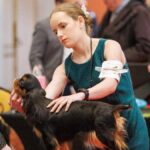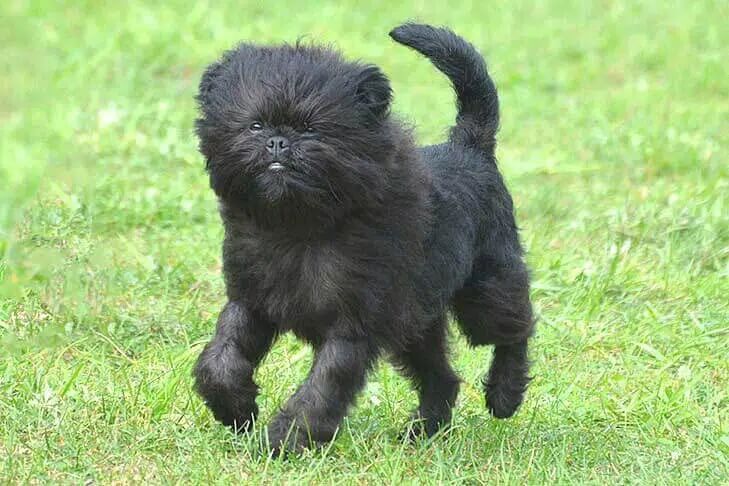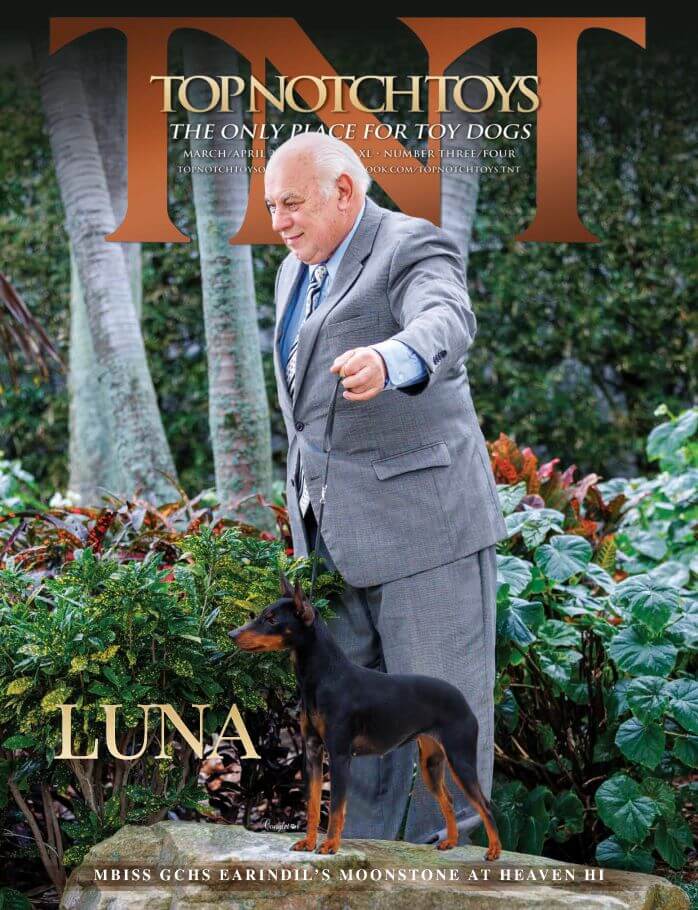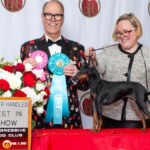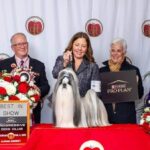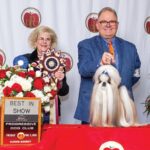Official Standard of the Affenpinscher
Courtesy of The American Kennel Club
Official Standard of the Affenpinscher – General Appearance:
The Affenpinscher is a balanced, wiry-haired terrier-like toy dog whose intelligence and demeanor make it a good house pet. Originating in Germany, the name Affenpinscher means “monkey-like terrier.” The breed was developed to rid the kitchens, granaries, and stables of rodents. In France the breed is described as the “Diablotin Moustachu” or moustached little devil. Both describe the appearance and attitude of this delightful breed. The total overall appearance of the Affenpinscher is more important than any individual characteristic. He is described as having a neat but shaggy appearance.
Official Standard of the Affenpinscher – Size, Proportion, Substance:
A sturdy, compact dog with medium bone, not delicate in any way. Preferred height at the withers is 9½ to 11½ inches. Withers height is approximately the same as the length of the body from the point of the shoulder to point of the buttocks, giving a square appearance. The female may be slightly longer.
Official Standard of the Affenpinscher – Head:
The head is in proportion to the body, carried confidently with monkey- like facial expression. Eyes – Round, dark, brilliant, and of medium size in proportion to the head but not bulging or protruding. Eye rims are black. Ears – Cropped to a point, set high and standing erect; or natural, standing erect, semi-erect or dropped. All of the above types of ears, if symmetrical, are acceptable as long as the monkey-like expression is maintained. Skull – Round and domed, but not coarse. Stop -Well-defined. Muzzle – Short and narrowing slightly to a blunt nose. The length of the muzzle is approximately the same as the distance between the eyes. Nose – Black, turned neither up nor down. Lips – Black, with prominent lower lip. Bite – Slightly undershot. A level bite is acceptable if the monkey- like expression is maintained. An overshot bite is to be severely penalized. A wry mouth is a serious fault. The teeth and tongue do not show when the mouth is closed. The lower jaw is broad enough for the lower teeth to be straight and even.
Official Standard of the Affenpinscher – Neck, Topline, Body:
Neck – Short and straight. Topline straight and level. Body – The chest is moderately broad and deep; ribs are moderately sprung. Tuckup is slight. The back is short and level with a strong loin. The croup has just a perceptible curve. Tail may be docked or natural. A docked tail is generally between 1 and 2 inches long, set high and carried erect. The natural tail is set high and carried curved gently up over the back while moving. The type of tail is not a major consideration.
Official Standard of the Affenpinscher – Forequarters:
Front angulation is moderate. Shoulders – with moderate layback. The length of the shoulder blade and the upper arm are about equal. Elbows – close to the body. Front legs straight when viewed from any direction. Pasterns short and straight. Dewclaws generally removed. Feet small, round, and compact with black pads and nails.
Official Standard of the Affenpinscher – Hindquarters:
Rear angulation is moderate to match the front. Hindlegs straight when viewed from behind. From the side, hindlegs are set under the body to maintain a square appearance. The length of the upper thigh and the second thigh are about equal with moderate bend to the stifle. Hocks – Moderately angulated.
Official Standard of the Affenpinscher – Coat:
Dense hair, rough, harsh, and about 1 inch in length on the shoulders and body. May be shorter on the rear and tail. Head, neck, chest, stomach and legs have longer, less harsh coat. The mature Affenpinscher has a mane or cape of strong hair which blends into the back coat at the withers area. The longer hair on the head, eyebrows and beard stands off and frames the face to emphasize the monkey-like expression. Hair on the ears is cut very short. A correct coat needs little grooming to blend the various lengths of hair to maintain a neat but shaggy appearance.
Official Standard of the Affenpinscher – Color:
Black, gray, silver, red, black and tan, or beige are all acceptable. Blacks may have a rusty cast or a few white or silver hairs mixed with the black. Reds may vary from a brownish red to an orangey tan. Beige has black, brown, and/or white hairs mixed with the red. With various colors, the furnishings may be a bit lighter. Some dogs may have black masks. A small white spot on the chest is not penalized, but large white patches are undesirable. Color is not a major consideration.
Official Standard of the Affenpinscher – Gait:
Light, free, sound, balanced, confident, the Affenpinscher carries itself with comic seriousness. Viewed from the front or rear, while walking the legs move parallel to each other. Trotting, the feet will converge toward a midline as speed increases. Unsound gait is to be heavily penalized.
Official Standard of the Affenpinscher – Temperament:
General demeanor is game, alert, and inquisitive with great loyalty and affection toward its master and friends. The breed is generally quiet, but can become vehemently excited when threatened or attacked, and is fearless toward any aggressor.
Official Standard of The Affenpinscher
Approved June 12, 2000
Effective July 27, 2000
